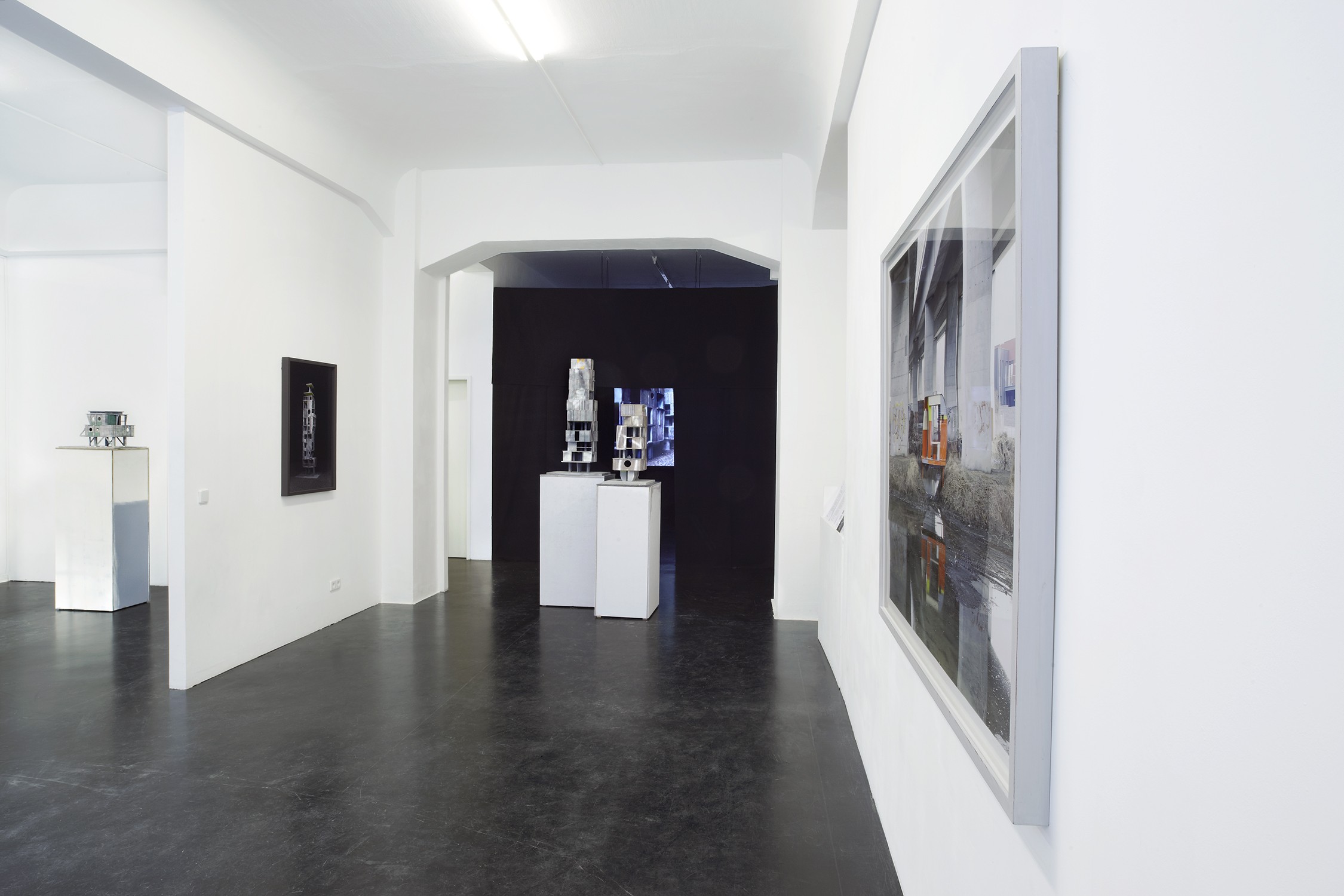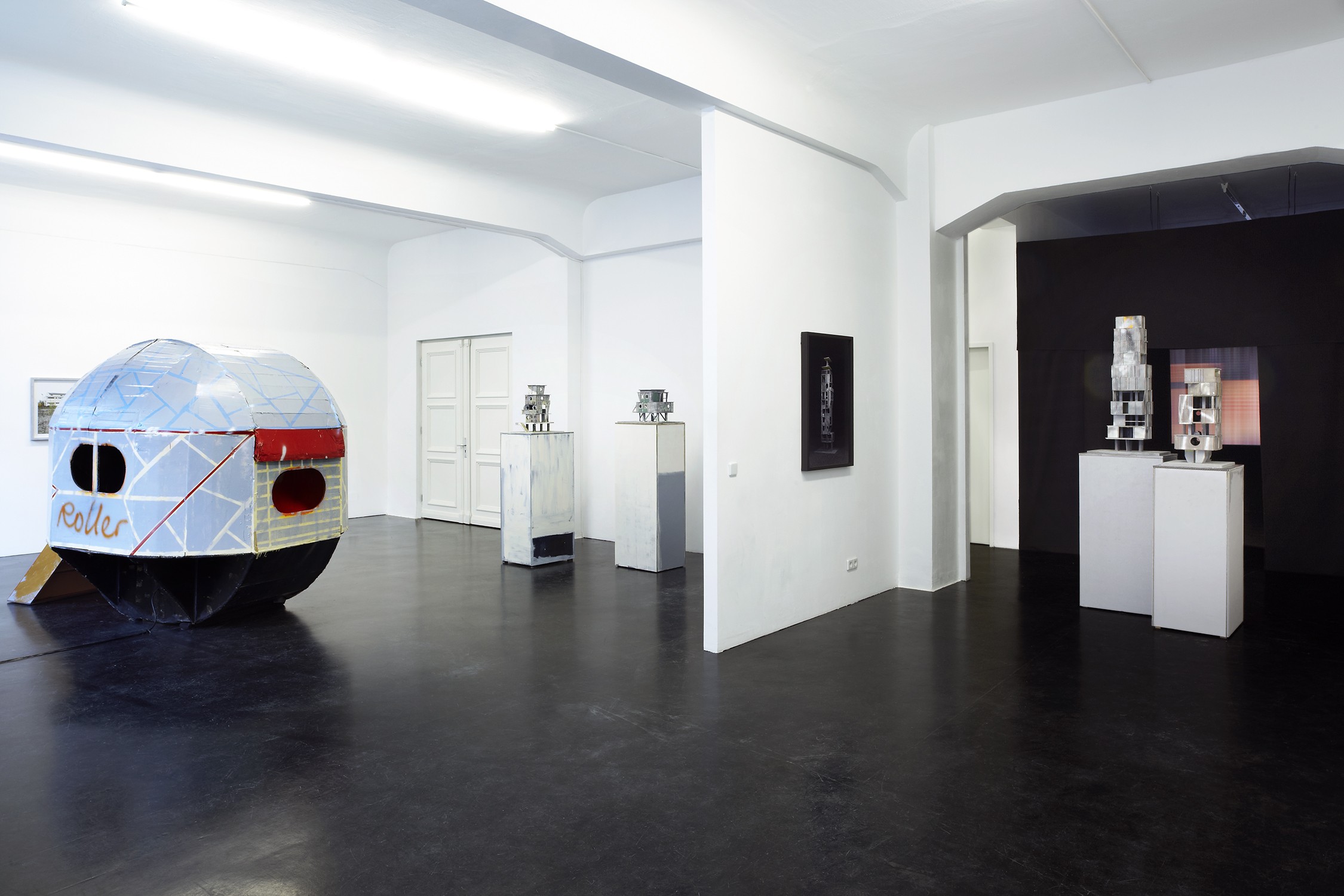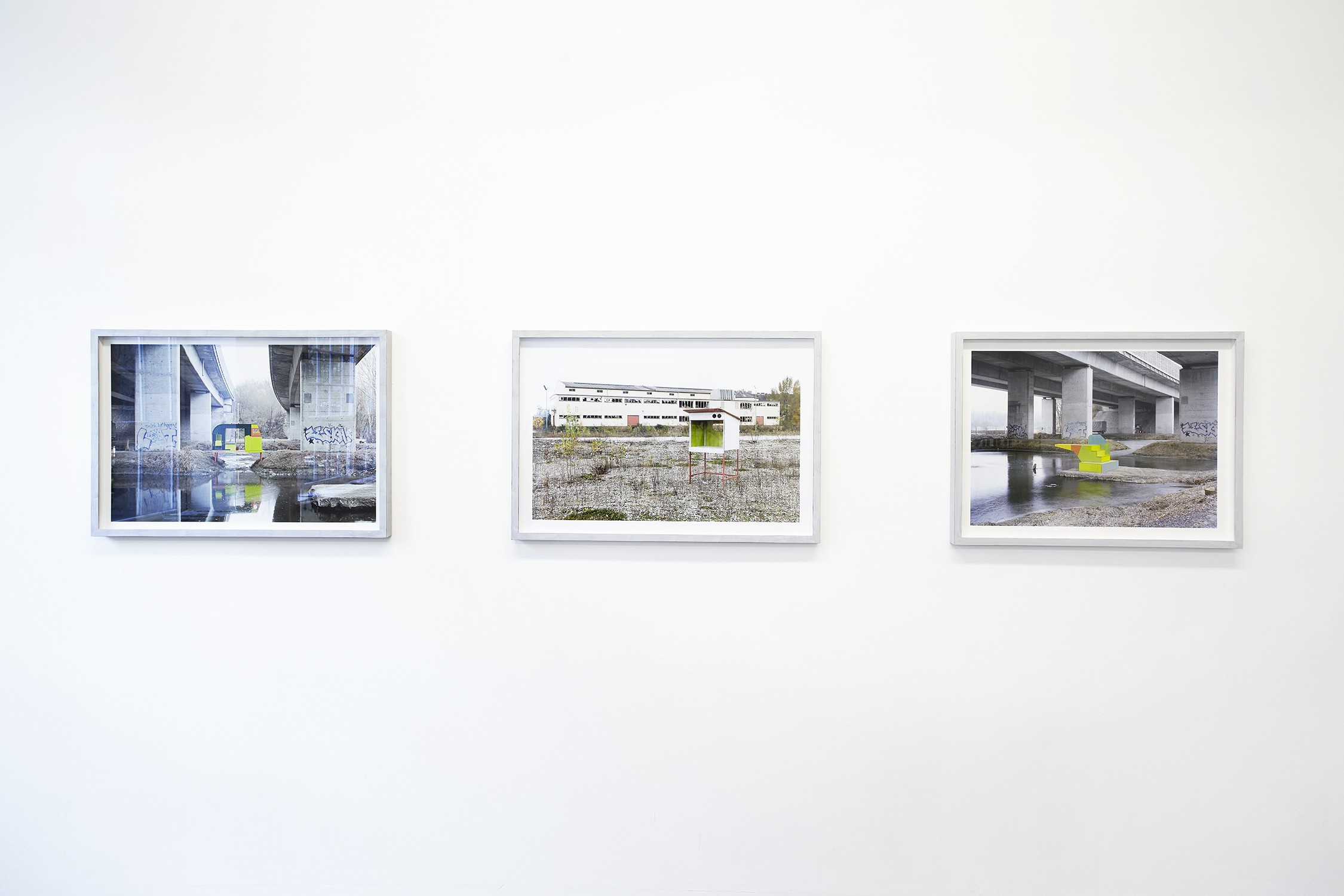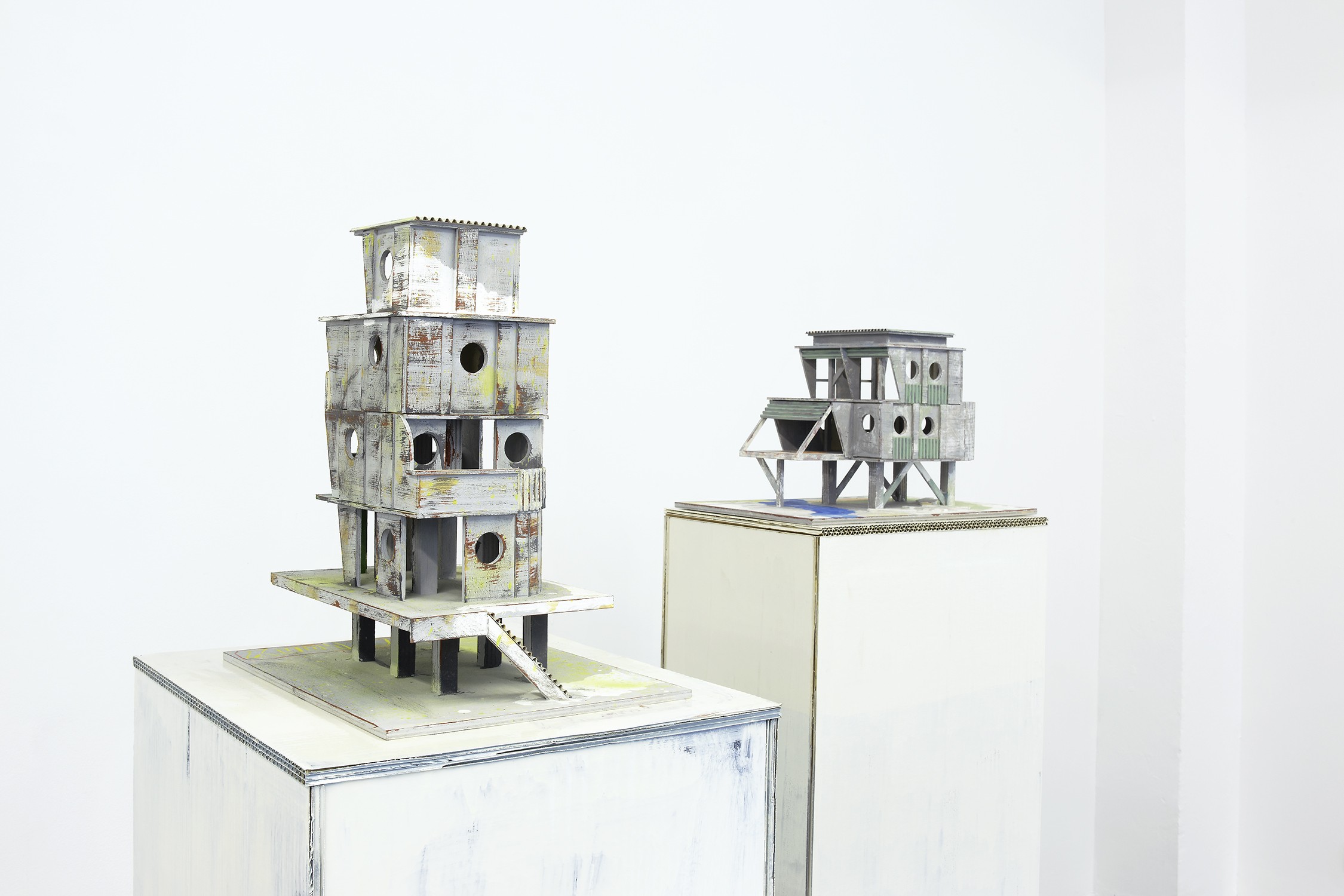





The Galerie alexander levy is very pleased to be able to present new works from Lorenz Estermann with the Virtual Reactor exhibit. In addition to new sculptures, photographs and paper works, the film METROPOLAR – Dark City will be presented for the first time. In the last half year, Estermann designed a complex film set for the film in order to make his sculptures emotionally experiencable.
“Lorenz Estermann locates his art between architecture, sculpture and painting. It involves models of imaginary architectural structures, which Estermann first seizes upon and then realises as models in various materials (wood, metal, cardboard, etc.). He paints them in a way that is unusual for architecture, whereby they become something more like three-dimensional paintings. Their functionality, if one imagines them in the corresponding dimension, is also disrupted, as a result of which they become sculptural constructs.
What should a house look like, and how, by contrast, a sculpture? One should be able to enter the one and walk around the other; this is at least the conventional notion.
However, the development of art since the start of the 20th century in the shadow of the avant-garde shows us that this need not be the case. Object art and visionary considerations within architecture have relocated the codes and allow for other forms of reality.
Estermann equates the model with the image. The models, like the images, are vehicles of imagination, which in some case originate from imagery deposited deep within the viewers and their world of experience. The exemplary character of the model makes something otherwise inaccessible accessible. The model provides scales and arguments, enables orientation and analogies. Beyond this, it enables the layperson conceivability; it provides connections to usually almost entirely closed realms of knowledge. In the model, a resource of humans is addressed that can withstand reality indefinitely: imagination.
Estermann’s three-dimensional constructs, which he also implements as collage- like images, allow the viewer to look into precisely those interstices existing beyond the categorisations of art.
We are all familiar with the telephone booths disposed of at dumps, the bus shelters and temporary functional structures in commercial building, which are in some cases painted in the wildest colours. Following a concept of “real art”, the randomly seen is reoccupied in art in terms of content. Art has the possibility of enquiring as to the semantics of that seen and in this way of making attempts at interpretation. In the case of Lorenz Estermann, one can now ask where his art is located. He shows us the transitions from one to the other disposition – from painting to sculpture and on to architecture.”
Günther Holler-Schuster,
Neue Galerie Graz at the Universalmuseum Joanneum